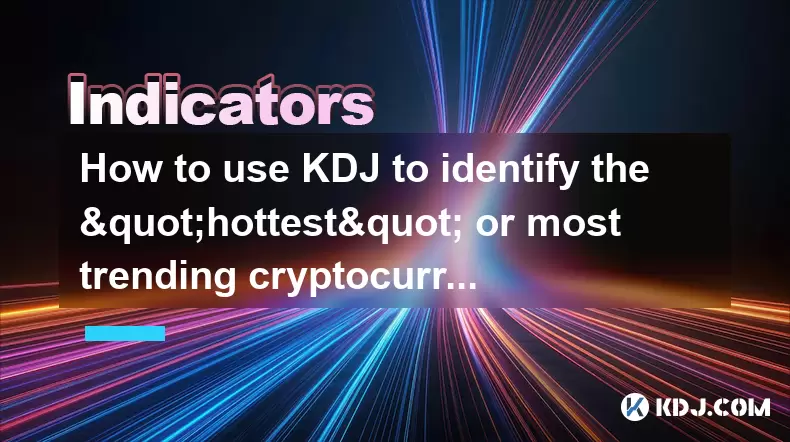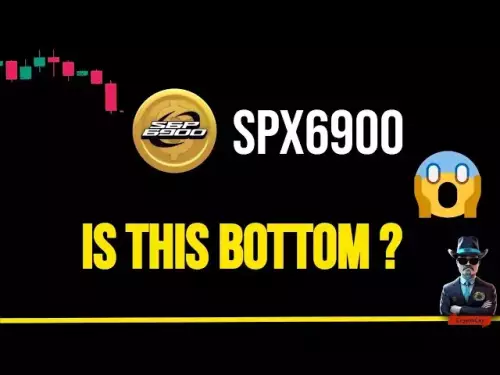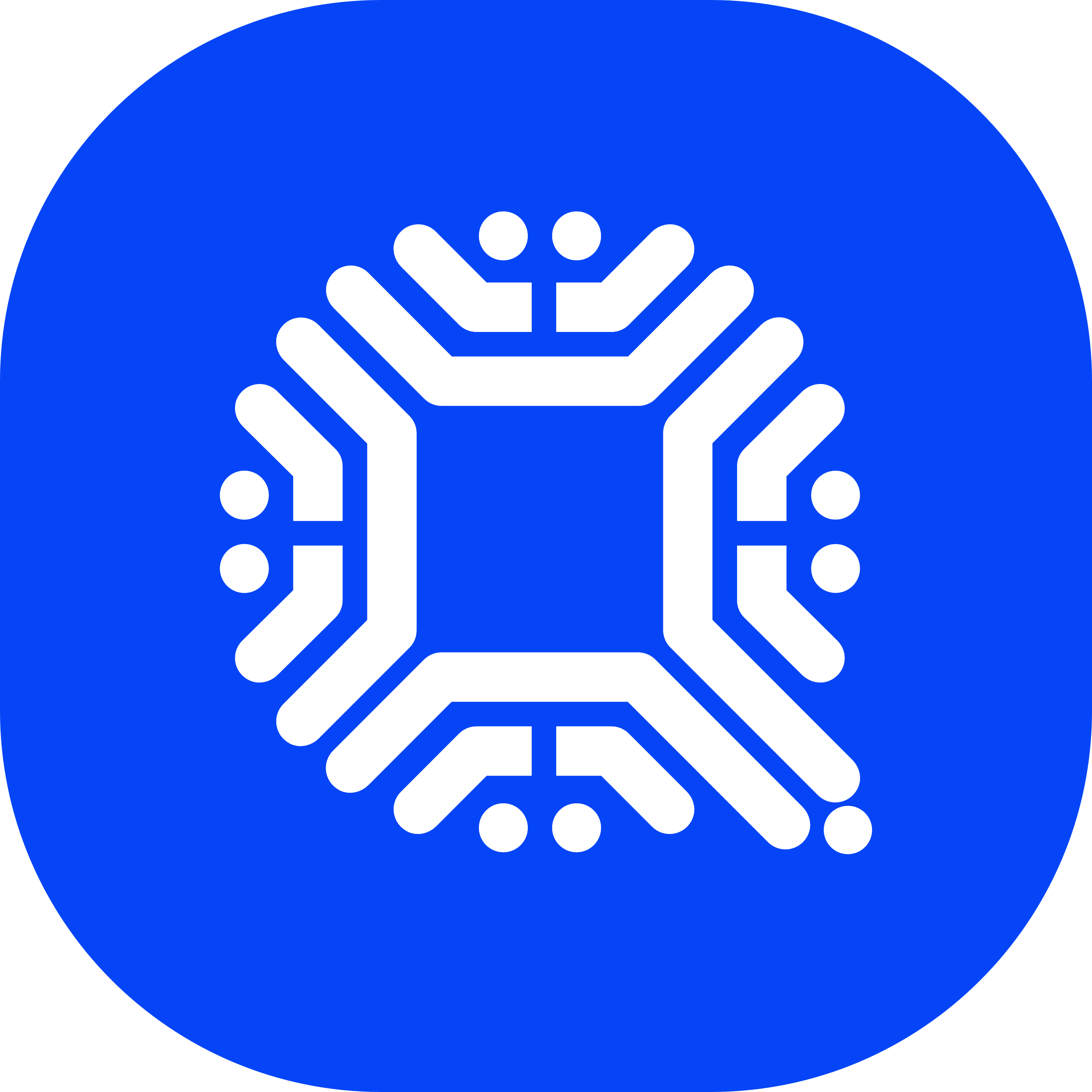-
 Bitcoin
Bitcoin $113100
-1.74% -
 Ethereum
Ethereum $4800
1.16% -
 XRP
XRP $3.041
0.36% -
 Tether USDt
Tether USDt $0.9999
0.02% -
 BNB
BNB $876.6
-0.40% -
 Solana
Solana $205.1
0.96% -
 USDC
USDC $0.0000
0.00% -
 Dogecoin
Dogecoin $0.2345
-0.10% -
 TRON
TRON $0.3629
0.40% -
 Cardano
Cardano $0.9260
1.91% -
 Chainlink
Chainlink $26.20
0.28% -
 Hyperliquid
Hyperliquid $46.04
2.89% -
 Sui
Sui $3.722
0.22% -
 Stellar
Stellar $0.4113
-0.53% -
 Ethena USDe
Ethena USDe $1.000
0.03% -
 Bitcoin Cash
Bitcoin Cash $590.3
0.39% -
 Avalanche
Avalanche $25.82
-0.01% -
 Hedera
Hedera $0.2504
-0.92% -
 Litecoin
Litecoin $119.1
-1.33% -
 UNUS SED LEO
UNUS SED LEO $9.598
0.03% -
 Toncoin
Toncoin $3.315
-1.69% -
 Shiba Inu
Shiba Inu $0.00001308
-1.02% -
 Uniswap
Uniswap $11.06
-2.10% -
 Polkadot
Polkadot $4.149
-1.10% -
 Dai
Dai $1.000
0.03% -
 Aave
Aave $350.7
-1.07% -
 Cronos
Cronos $0.1587
0.97% -
 Bitget Token
Bitget Token $4.664
-0.71% -
 Monero
Monero $274.5
3.42% -
 Ethena
Ethena $0.7021
-4.70%
How to use KDJ to identify the "hottest" or most trending cryptocurrencies?
The KDJ indicator helps crypto traders spot momentum shifts by analyzing %K, %D, and %J lines, with crossovers below 20 or above 80 signaling potential trend reversals or continuations.
Aug 10, 2025 at 09:08 am

Understanding the KDJ Indicator in Cryptocurrency Trading
The KDJ indicator is a momentum oscillator derived from the Stochastic Oscillator, widely used in technical analysis to identify overbought and oversold conditions in financial markets, including cryptocurrencies. It consists of three lines: %K (the fast stochastic), %D (a moving average of %K), and %J (a measure of divergence between %K and %D). The core idea behind the KDJ is to compare a cryptocurrency’s closing price to its price range over a specific period, typically 9 periods. When applied correctly, the KDJ can help traders detect early signs of trend reversals or continuations. In the fast-moving crypto market, this makes it a valuable tool for spotting assets that are gaining momentum—commonly referred to as the "hottest" or most trending coins.
The formula for the KDJ involves calculating the %K line using the following:
%K = [(Current Close – Lowest Low) / (Highest High – Lowest Low)] × 100
where the Highest High and Lowest Low are measured over the past 9 periods. The %D line is a 3-period moving average of %K, and the %J line is calculated as (3 × %K) – (2 × %D). Traders watch for crossovers between these lines and their positions relative to key thresholds (like 20 and 80) to interpret momentum shifts.
Setting Up KDJ on a Cryptocurrency Chart
To begin using KDJ for identifying trending cryptocurrencies, you need access to a charting platform that supports this indicator. Platforms like TradingView, Binance, or Bybit offer KDJ as a built-in or customizable indicator. Here’s how to set it up on TradingView:
- Open the chart for any cryptocurrency (e.g., BTC/USDT).
- Click on the "Indicators" button located at the top of the chart.
- Search for "Stochastic" in the indicator search bar.
- Select the Stochastic indicator and ensure the settings are adjusted to match KDJ parameters: 9, 3, 3.
- Modify the indicator to display the %J line if not visible by default—this may require a custom script or formula input.
Once applied, the three lines (%K, %D, %J) will appear in a sub-window below the price chart. The default overbought level is 80, and the oversold level is 20. These thresholds help identify potential entry and exit points. When %K and %D cross above 20 from below, it may signal the start of an uptrend. Conversely, a drop below 80 after being above it could suggest weakening momentum.
Identifying Momentum Shifts with KDJ Crossovers
One of the primary ways to detect trending cryptocurrencies using KDJ is by monitoring crossover signals between the %K and %D lines. These crossovers act as early warnings of momentum changes:
- A bullish crossover occurs when the %K line crosses above the %D line while both are below 20. This indicates that upward momentum is building and the asset may be emerging from an oversold condition.
- A bearish crossover happens when %K crosses below %D above the 80 level, suggesting the asset is overbought and may soon correct.
For example, if SOL/USDT shows a bullish KDJ crossover at the same time trading volume spikes, it could signal that the coin is gaining attention and entering a trending phase. Similarly, if DOGE/USDT has been range-bound and suddenly the %K line surges past %D from 15 to 30, this may reflect increasing buying pressure.
The %J line adds another layer of insight. When %J rises sharply above 100, it indicates extreme bullish momentum, often seen during parabolic rallies. Conversely, a %J plunge below 0 may highlight panic selling. However, such extremes should be interpreted alongside volume and broader market trends to avoid false signals.
Filtering Cryptocurrencies with Strong KDJ Signals
To efficiently scan for the "hottest" cryptocurrencies using KDJ, traders can apply a systematic screening process across multiple assets. This requires monitoring a watchlist of top-volume coins and analyzing their KDJ readings in real time.
- Create a custom watchlist on your trading platform including major altcoins like ADA, XRP, AVAX, and LINK.
- Apply the KDJ (9,3,3) indicator to each asset in the list.
- Sort or filter for coins where:
- %K has recently crossed above %D.
- Both %K and %D are rising from below 50.
- %J is accelerating upward, ideally above 50.
- Price is trading above key moving averages (e.g., 20-period EMA).
For instance, if AVAX/USDT shows a KDJ crossover with %K at 45, %D at 42, and %J at 54, while price breaks a resistance level on high volume, it suggests strong upward momentum. Comparatively, a coin like DOT/USDT with %K and %D declining from 75 to 60 may be losing steam despite still being in positive territory.
Using alerts on platforms like TradingView can automate this process. Set up notifications for when %K crosses %D upward below 50, helping you catch early-stage trends before they become widely recognized.
Combining KDJ with Volume and Market Sentiment
While KDJ provides strong momentum signals, relying on it alone can lead to misleading results due to the volatile nature of cryptocurrencies. Therefore, it should be combined with volume analysis and market sentiment indicators for confirmation.
- Look for increasing trading volume coinciding with a bullish KDJ crossover. A surge in volume validates the strength of the move.
- Monitor on-chain data (e.g., via Santiment or Glassnode) to see if large wallets are accumulating the asset.
- Check social sentiment using tools like LunarCrush or CryptoPanic to determine if public interest is rising.
For example, if SHIB/USDT shows a KDJ bullish crossover and social mentions spike by 200% in 24 hours, it increases the probability that the trend is sustainable. Conversely, a KDJ signal without volume or sentiment support may be a false breakout.
Additionally, higher timeframes (like 4-hour or daily charts) provide more reliable KDJ signals than 5-minute or 15-minute charts, which are prone to noise. A daily chart KDJ crossover on ETH/USDT carries more weight than one on a 15-minute chart.
Common Pitfalls and How to Avoid Them
Despite its usefulness, the KDJ indicator has limitations in the crypto space. One major issue is whipsaws—frequent false signals in sideways or choppy markets. To reduce this risk:
- Avoid trading KDJ signals in low-volatility ranges.
- Wait for confirmation candles—for example, a bullish engulfing pattern after a KDJ crossover.
- Use support and resistance levels to validate entries. A KDJ buy signal near a strong support zone is more reliable.
Another pitfall is over-reliance on overbought/oversold readings. In strong trends, cryptocurrencies can remain overbought (above 80) for extended periods. For instance, during a bull run, BTC/USDT might stay above 80 on KDJ for days without reversing. In such cases, focus on trend-following signals (like %K and %D staying elevated and rising) rather than expecting a reversal.
Also, ensure your data feed is accurate. Delays or incorrect price sources can distort KDJ values, especially on lesser-known exchanges.
Frequently Asked Questions
Can KDJ be used on all cryptocurrencies?
Yes, the KDJ indicator can be applied to any cryptocurrency with sufficient price history and trading volume. However, it performs best on high-liquidity pairs like BTC, ETH, and major altcoins. Low-volume coins often exhibit erratic price movements that can generate misleading KDJ signals.
What timeframes work best with KDJ for crypto trading?
The 4-hour and daily charts are most effective for identifying meaningful trends. Shorter timeframes like 5-minute or 15-minute charts produce excessive noise, increasing the risk of false signals. For day trading, the 1-hour chart with KDJ can offer balanced insights.
How do I adjust KDJ settings for different market conditions?
The standard setting is 9,3,3, but in highly volatile markets, increasing the period to 14,3,3 can smooth the lines and reduce false crossovers. In ranging markets, shorter periods like 5,3,3 may help capture quicker swings.
Is KDJ suitable for automated trading bots?
Yes, KDJ logic can be coded into trading bots using APIs from platforms like Binance or Bybit. The crossover of %K and %D, along with threshold conditions (e.g., %K > %D and %K
Disclaimer:info@kdj.com
The information provided is not trading advice. kdj.com does not assume any responsibility for any investments made based on the information provided in this article. Cryptocurrencies are highly volatile and it is highly recommended that you invest with caution after thorough research!
If you believe that the content used on this website infringes your copyright, please contact us immediately (info@kdj.com) and we will delete it promptly.
- Ripple's RLUSD and Japan's Regulation: A Match Made in Digital Finance Heaven
- 2025-08-25 07:05:29
- BlockDAG's $381M Presale: Meet the Core Team Driving Its Success
- 2025-08-25 07:25:14
- Solana Price Targets $270: On-Chain Strength Fuels Bullish Momentum
- 2025-08-25 07:25:14
- Ozak AI, Binance, and Coinbase: Navigating the Crypto Landscape in 2025
- 2025-08-25 05:05:13
- Coinbase, Hacker, and Solana: Decoding the $8M Heist
- 2025-08-25 05:30:12
- Riding the Altcoin Wave: Momentum, Tech, and Wall Street's Embrace
- 2025-08-25 06:05:21
Related knowledge

What does it mean when the +DI and -DI cross frequently in the DMI indicator but the ADX is flattening?
Aug 11,2025 at 03:15am
Understanding the DMI Indicator ComponentsThe Directional Movement Index (DMI) is a technical analysis tool composed of three lines: the +DI (Positive...

What does the sudden appearance of a "dark cloud cover" candlestick pattern during an uptrend indicate?
Aug 13,2025 at 11:35am
Understanding the 'Dark Cloud Cover' Candlestick PatternThe dark cloud cover is a bearish reversal pattern in technical analysis that typically appear...

What does it mean when the moving average, MACD, and RSI all send buy signals simultaneously?
Aug 11,2025 at 01:42pm
Understanding the Convergence of Technical IndicatorsWhen the moving average, MACD, and RSI all generate buy signals at the same time, traders interpr...

What does it mean when both the KDJ indicator and the RSI show overbought signals simultaneously?
Aug 13,2025 at 11:35am
Understanding the KDJ Indicator in Cryptocurrency TradingThe KDJ indicator is a momentum oscillator derived from the Stochastic Oscillator, widely use...

What does it mean when the price is trading above the SAR indicator but the red dots are densely packed?
Aug 09,2025 at 11:49pm
Understanding the SAR Indicator and Its Visual SignalsThe SAR (Parabolic Stop and Reverse) indicator is a technical analysis tool used primarily to de...

What does it mean when the candlestick chart forms a "Morning Star" but trading volume is sluggish?
Aug 12,2025 at 06:28pm
Understanding the Morning Star Candlestick PatternThe Morning Star is a three-candle bullish reversal pattern commonly observed in cryptocurrency pric...

What does it mean when the +DI and -DI cross frequently in the DMI indicator but the ADX is flattening?
Aug 11,2025 at 03:15am
Understanding the DMI Indicator ComponentsThe Directional Movement Index (DMI) is a technical analysis tool composed of three lines: the +DI (Positive...

What does the sudden appearance of a "dark cloud cover" candlestick pattern during an uptrend indicate?
Aug 13,2025 at 11:35am
Understanding the 'Dark Cloud Cover' Candlestick PatternThe dark cloud cover is a bearish reversal pattern in technical analysis that typically appear...

What does it mean when the moving average, MACD, and RSI all send buy signals simultaneously?
Aug 11,2025 at 01:42pm
Understanding the Convergence of Technical IndicatorsWhen the moving average, MACD, and RSI all generate buy signals at the same time, traders interpr...

What does it mean when both the KDJ indicator and the RSI show overbought signals simultaneously?
Aug 13,2025 at 11:35am
Understanding the KDJ Indicator in Cryptocurrency TradingThe KDJ indicator is a momentum oscillator derived from the Stochastic Oscillator, widely use...

What does it mean when the price is trading above the SAR indicator but the red dots are densely packed?
Aug 09,2025 at 11:49pm
Understanding the SAR Indicator and Its Visual SignalsThe SAR (Parabolic Stop and Reverse) indicator is a technical analysis tool used primarily to de...

What does it mean when the candlestick chart forms a "Morning Star" but trading volume is sluggish?
Aug 12,2025 at 06:28pm
Understanding the Morning Star Candlestick PatternThe Morning Star is a three-candle bullish reversal pattern commonly observed in cryptocurrency pric...
See all articles

























































































